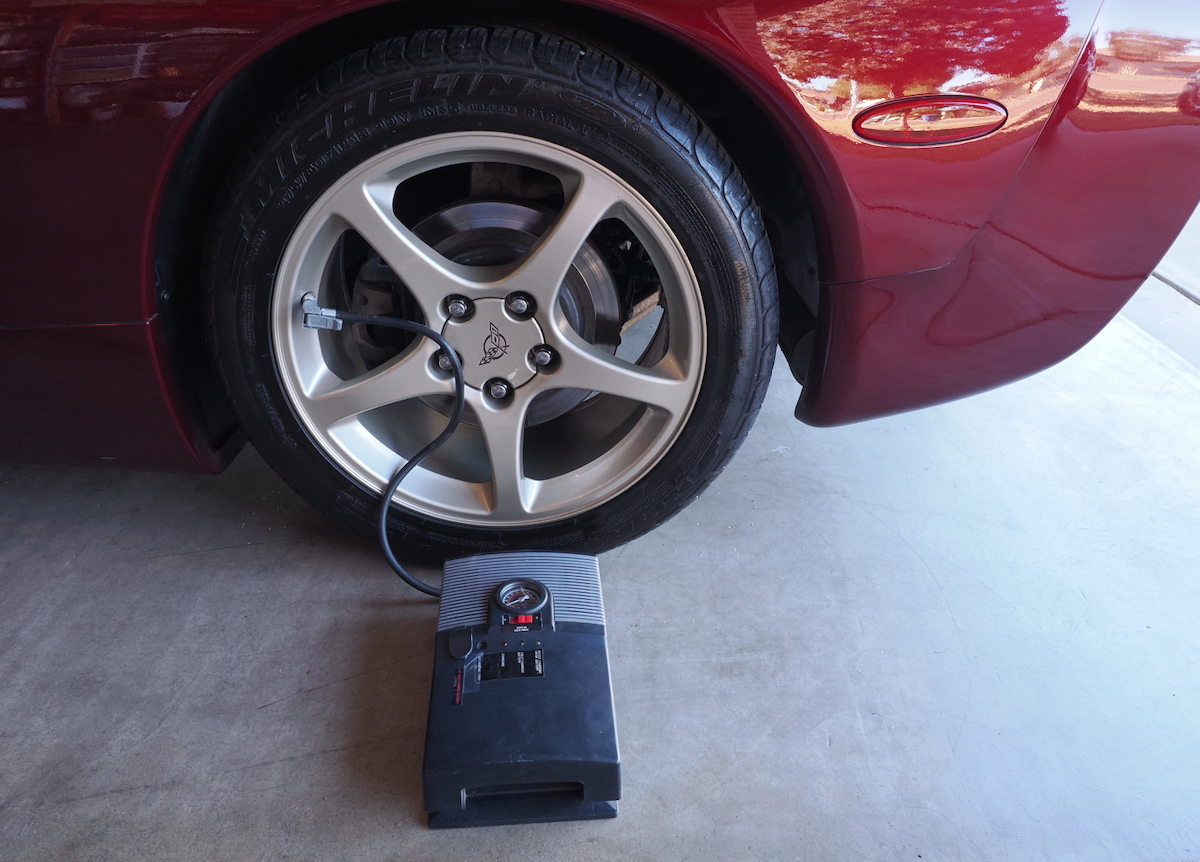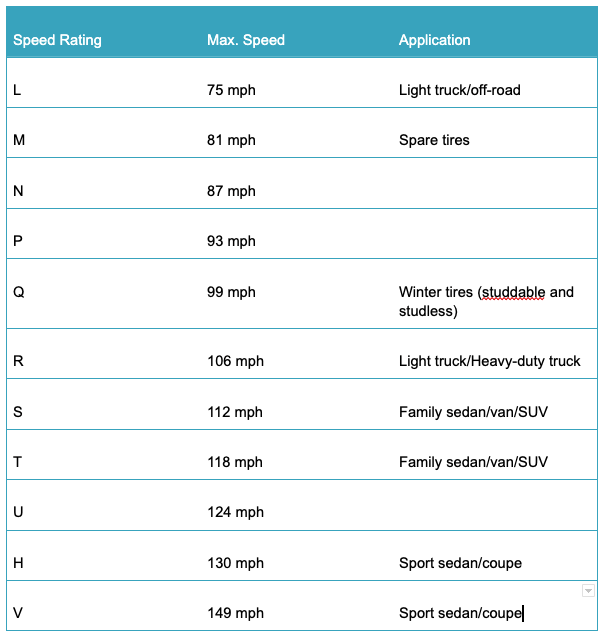Contents
Your tires provide vital contact with the road. So, before buying a new set of tires, it’s essential to consider multiple factors, especially the tire speed rating.
What Is Tire Speed Rating?
The tire speed rating is the maximum speed a tire can safely travel. If a vehicle exceeds the rating for the tire, it’s no longer considered safe.
A higher tire speed rating means better handling and control when traveling faster. Speed ratings are designated by a letter, ranging from A to Z. These ratings range between three miles per hour (mph) and more than 186 mph.
The first tire speed ratings were used in Europe in the 1960s. As vehicles became faster and more focused on performance, manufacturers and consumers needed a way to understand if the tires could handle the demand.
Shop now for tiresThe early speed ratings became the foundation for what we use today. All tire manufacturers follow the same guidelines, and the Department of Transportation (DOT) uses the rating system.
So, how is the tire speed rating determined? Tire manufacturers put the inflated tire in a drum that rotates for 10-minute intervals. The speed increases with each interval. The technicians determine the maximum speed at which the tire maintains its structural integrity, thereby determining the speed rating.
However, speed ratings are based on lab conditions where everything is heavily controlled. Therefore, these ratings don’t necessarily indicate the speed that can be maintained in real-world situations. Instead, they demonstrate the capacity to hit a certain speed.
How Do I Find the Speed Rating of My Tire?
To pick the proper tire speed rating for your vehicle, look for the suggested tire’s specifications in these locations:
- Owner’s manual
- Driver’s side door jamb
- Glove box door
- Gas tank hatch
- Tire sidewall
It’s a good idea to confirm the reading on the tire sidewall with a secondary source, just in case the vehicle has been inadvertently fitted with tires that differ from the manufacturer’s requirements. When looking at the description, the speed rating is the final letter in the character sequence: P225/50R17 98H.
In this example, the speed rating is H. As you will see in the chart, the H means the tire is rated for up to 130 mph.
This is another example. P235/40R19 96V. In this case, the tire has a V speed rating. According to tire speed rating charts, the V is good up to 149 mph.
Speed Rating Tires Chart
The most common tire speed ratings relate to tires that haven’t been altered or damaged. You can’t expect to drive at these speeds if the tires are overloaded or under-inflated.
The A to K ratings aren’t common for passenger vehicles. These have speed ratings starting under 25 mph and reaching up to 68 mph. Meanwhile,W- and Y-rated tires were added when manufacturers started making Z-rated tires. Initially, the Z tires meant speeds above 149 mph, but the exact limit isn’t listed. Regardless, these tires are all rated for excessive speeds.
These days, the Z is designated within the tire size code instead. So it may look something like this: 205/45ZR17 88W. Notice there’s a Z, but it also features a W rating, showing a maximum speed of 168 mph.
Additionally, the Y rating can be listed differently. For example, you may see it this way: 285/35ZR19 99Y, which indicates a speed rating of 186 mph. If it’s listed 285/35ZR19 (99Y), the speed rating is more than 186 mph.
Shop now for tiresChoosing the Correct Tire Speed Rating
To ensure safety, you must pick the proper tire speed rating for your vehicle and your typical driving style. Yes, you can use tires that have a higher speed rating. No law dictates that you must use a tire with the recommended or higher rating. However, you may spend more than you need.
On the other hand, you should never use tires with a lower rating than the manufacturer recommends. At the least, the lower speed rating will negatively affect how your car handles and steers. Also, your vehicle may not pass inspection with the wrong tires installed. Even worse, an insurance claim could be questioned or denied if you get into a car accident because you installed the wrong tires.
There’s no strict rule against mixing tires with different tire speed ratings, but we don’t recommend the practice. It’s best to use four tires with the same rating, that matches the one recommended by the manufacturer.
Tires Safety Rules

A portable tire inflator helps keep your tires at the proper PSI whether you’re at home or on the road.
Aside from following the tire speed rating, there are a few other considerations to remember if you want a safe drive.
- Monitor tire pressure. We recommend checking it monthly or any time the temperature changes dramatically. Adjust as needed.
- Watch tire tread carefully. Have the tires rotated regularly to ensure the wear pattern remains uniform. If the tread gets low, replace the tires.
- Use the appropriate tires for the season. If you are frequently driving in snow, consider investing in winter tires.
- Do not overload the vehicle, which puts stress on the tire sidewalls.
The more you can learn about tire terminology and what’s expected, the safer you will be on the road.
Shop now for tires







